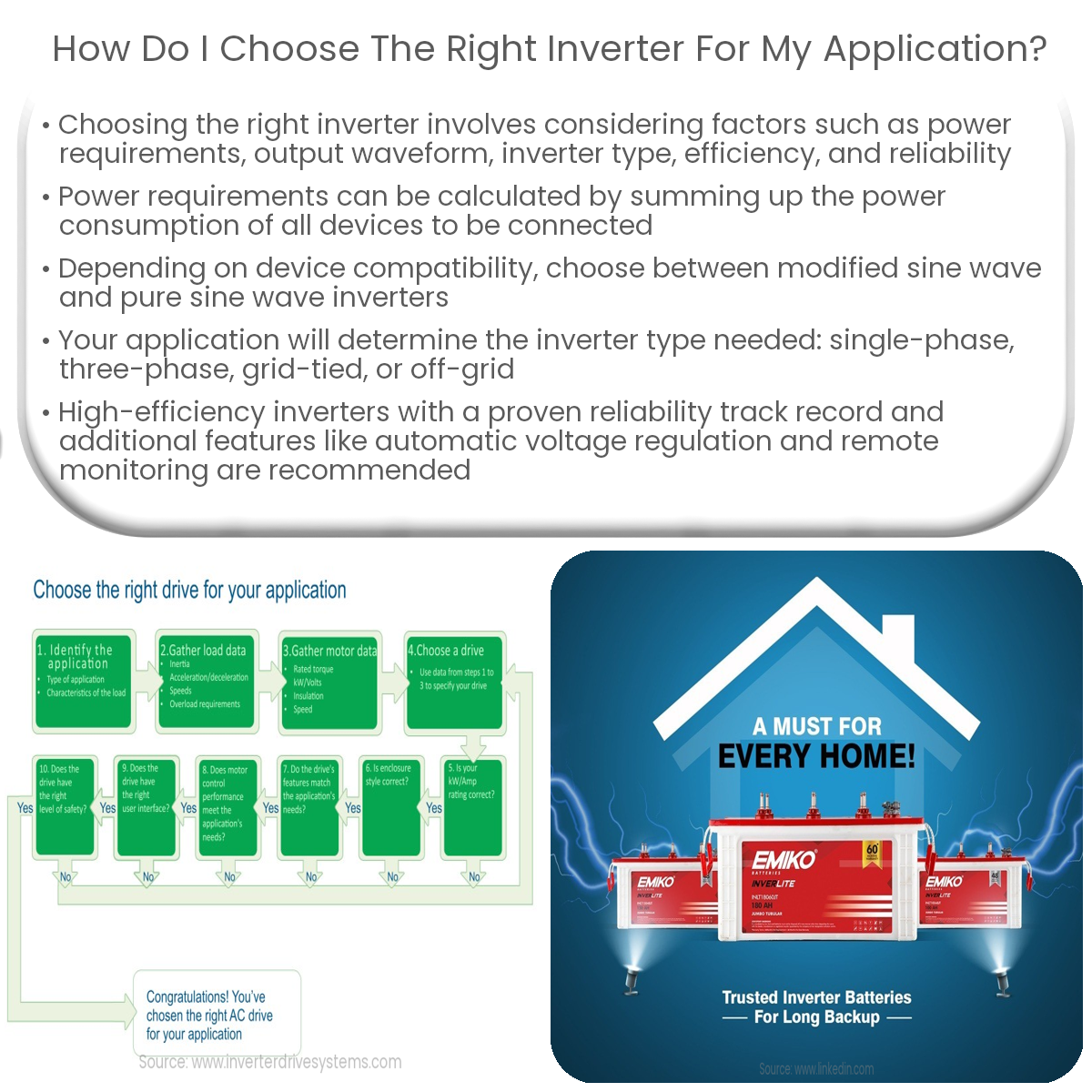To choose the right inverter, consider power requirements, output waveform, inverter type, efficiency, reliability, and additional features.
Choosing the Right Inverter for Your Application
Selecting the appropriate inverter for your application is crucial to ensure the efficient functioning of your system. This article will guide you through the process of choosing the right inverter based on various factors.
1. Determine Your Power Requirements
Identify the total power consumption of your application by calculating the combined power requirements of all the devices you intend to connect to the inverter. This information is usually provided in watts (W) on the device’s label or in the user manual. Ensure that the inverter’s power rating is sufficient to support your total power requirements.
2. Consider the Output Waveform
There are two primary types of output waveforms: modified sine wave and pure sine wave. Modified sine wave inverters are more affordable but may not be suitable for sensitive electronic equipment. Pure sine wave inverters provide a smooth waveform that closely resembles grid power, making them ideal for sensitive electronics. Choose the inverter type based on the compatibility of your devices with the output waveform.
3. Select the Appropriate Inverter Type
Consider the type of inverter that best suits your application:
- Single-phase inverters are suitable for residential and small-scale applications with lower power requirements.
- Three-phase inverters are used in commercial and industrial applications with higher power demands.
- Grid-tied inverters synchronize with the electrical grid, making them ideal for solar power systems connected to the grid.
- Off-grid inverters are designed for standalone power systems not connected to the grid, like remote cabins or boats.
4. Evaluate Efficiency and Reliability
Choose an inverter with high efficiency to ensure minimal energy loss during the conversion process. Look for inverters with a proven track record of reliability and durability to minimize the risk of failure in your system.
5. Check for Additional Features
Consider inverters with features that enhance performance, safety, and ease of use. Some common features include:
- Automatic voltage regulation to maintain stable output voltage
- Overload and short circuit protection to safeguard your devices
- Remote monitoring and control capabilities for convenient management
Conclusion
Choosing the right inverter for your application requires careful consideration of power requirements, output waveform, inverter type, efficiency, reliability, and additional features. By evaluating these factors, you can select the most suitable inverter to ensure the efficient and reliable operation of your system.


